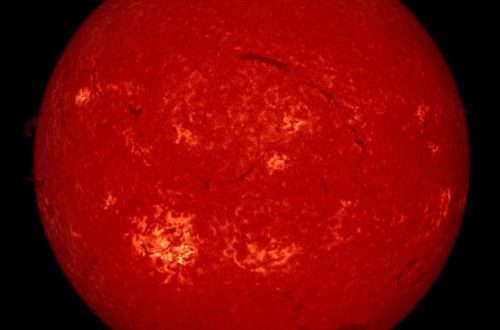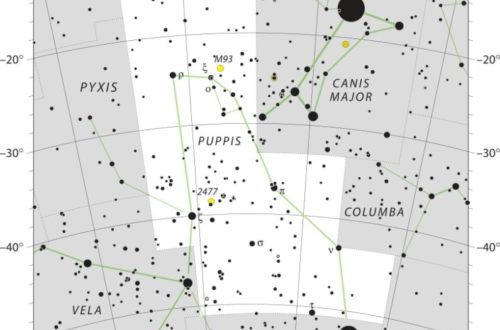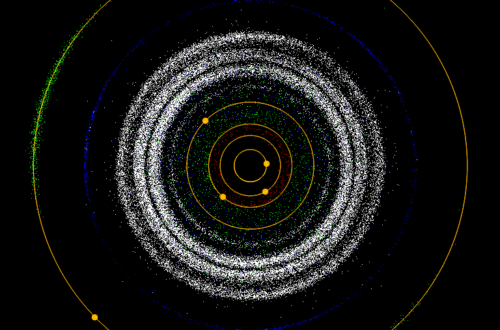Aurigid Meteor Shower: Observation Tips

The Aurigids are an unusual meteor shower that occurs each year in late August and early September, peaking on August 31. These meteors are from debris left by Comet C/1911 N1 Kiess.
Like all meteor showers, the Aurigids are named because they appear to originate from the constellation Auriga in the night sky. Most Aurigid meteors are fast and bright, so they should be easy to see in places with minimal light pollution.
What Are the Aurigids?
They have an impact on the night sky with a very modest but unique appearance. This shower is active annually from August 28 to September 5. Look for the most activity on August 31. The zenithal hourly rate (ZHR) peaks at a meager 6 meteors per hour.
As these meteors enter the atmosphere at a speed of 66 km/s, they zip across the sky in a brilliant flash! If you’re not looking out for them, you can blink and literally miss them.
Tracing the Aurigid Meteor Shower Path
The Aurigids are believed to originate from comet Kiess (C/1911 N1), which has an orbital period of about 2000 to 2100 years. As the comet travels through space, it sheds a path of particles. When Earth passes through this stream, the debris burns up in our atmosphere and produces the meteor shower we observe.
The comet’s orbit is what produces these meteoroid trails. This path is the reason why the shower happens at nearly the same time every year.
Understanding the Radiant Point
The radiant point is the place in the sky where meteors appear to originate from. For the Aurigid meteor shower, it’s in the Auriga constellation.
Finding Auriga on a starmap will help you find the radiant. Its position affects what you see: the higher the radiant, the more meteors are visible.
Catching the Aurigid Meteor Shower
Each late August and early September, the Aurigid meteor shower makes a dramatic appearance. It’s an ephemeral event that intrigues only those who know what to observe. This shower isn’t one of high drama—it’s a reserved shower well deserving of your patience and preparation that will grant you the most beautiful reward.
With activity peaking in the early morning, the Aurigids attract many energetic meteor observers. They appreciate the peacefulness of a clear, dark summer night sky and enjoy the excitement of seeing one of those quick, bright streaks. Careful planning and a clear understanding of conditions will help maximize the viewing experience, especially when contending with challenges like moonlight and light pollution.
Pinpointing Peak Viewing Dates
The only really favorable date for observers is at its peak! That would be on August 31. Historically, the Aurigids peak around dawn. Especially when the radiant point in Auriga rises high in the sky.
By circling these dates on a calendar or putting a reminder in their phone, observers can be prepared in advance. Viewing the shower over the course of multiple years shows us the activity trend of the meteors over time. It brings attention to shifts due to moon phases and weather conditions.
How the Moon Affects Visibility
Moonlight has a tendency to wash out faint meteors and reduce visibility, which is a big issue for a subtle shower like the Aurigids. What role does the moon play in visibility? The moon phase on peak nights usually has the greatest influence on how many meteors you’ll see.
- Moon Phases That Help:
- New Moon – Best, darkest sky
- Waxing or Waning Crescent – Little to no interference
- Moon Phases That Hurt:
- Third Quarter – Moderate brightness
- Full Moon – Extreme glare, very bad conditions
It’s best to plan your observations in years when the peak falls on a new moon. Another option is to wait until the moon has set below the horizon.
Realistic Meteor Count Expectations
For the Aurigids, only up to 6 meteors per hour should be visible. Things such as rainy weather, overcast skies, and urban light pollution will all play a role.
Quick meteors from this shower leave bright trails that last several seconds. Even if hardly any come, they are still a special sight. Observers who are familiar with counting meteors should carry a notepad or meteor logging app.
Record the time, direction, and brightness of each meteor. This not only serves to create a personal record, but adds to the experience itself.
Finding Auriga in Your Night Sky
Begin in the Northern Hemisphere. You’ll want to look north-northeast in the hours after midnight. Auriga is fairly recognizable, and you can start off by looking for its brightest star, Capella.
Auriga’s location is particularly important, as the radiant point of the shower lies within its borders. Refer to a star chart or a sky app to help you navigate.
Tips for Northern Hemisphere Observers
Be prepared for the conditions. Even summer nights can be brisk! Take a blanket or reclining chair, a thermos of your favorite beverage, and be prepared with some extra layers.
Find a safe, quiet place far from city lights. Looking through the shower with friends or local astronomy clubs injects even more excitement into the event and helps maintain enthusiasm during lulls in activity.
Give your eyes at least 20 to 30 minutes to adapt to the dark for optimal viewing.
Simple Gear for Aurigid Gazing
The Aurigids are a rare opportunity to see bright meteors zipping through the late summer sky. Whether you’re an Aurigid veteran or rookie, getting the most out of this show requires the right gear and a bit of preparation. Choosing a location with dark skies and minimal light pollution is essential.
Since the radiant point becomes higher in the sky as the night progresses, both location and timing are essential to the viewing experience. With the Moon in the sky during the peak of the Aurigid meteor shower, simple gear can go a long way to helping you enjoy the night and see every meteor.
Eyesight: Your Primary Tool
Eyesight is your primary tool. The best way to observe Aurigids is with your own eyes. Despite the fancy gear, nothing compares to your own eyes under a pristine night sky.
Allow your eyes to adapt to the darkness by avoiding artificial light sources for at least 20 minutes. After you look at your phone or notice glare on the screen, take a break! Looking away from screens, using red flashlights, and keeping your gaze relaxed will help you spot more meteors.
Getting Comfortable for the Wait
With Aurigids or any meteor watching, you’re looking at long periods of time outdoors, so you want to be comfortable. Plan to bring thick blankets or a sleeping bag, a comfy reclined lawn chair, and dress in extra layers for the cool nights.
Many others carry hand warmers, hats and scarves, particularly in the countryside where the air can cool quickly. Snacks and a hot drink help everyone stay warm and happy. An unmodified DSLR camera with a wide-angle lens, is adequate to capture the brightest aurigid trails.
Comfort Checklist:
- Warm clothing, hat, gloves
- Blankets or sleeping bag
- Reclining chair
- Snacks and drinks
- Camera with high ISO and wide lens
Skip the Telescope, Enjoy the View
Skip the telescope, and binoculars, and enjoy the view! Meteors quickly move through large sections of the sky. If you observe with just your eyes, you’ll never be shorted a spectacular sight, even with a waning gibbous Moon shining bright.
Telescopes can be restrictive and frustrating. Reducing to the basics will help you maximize your experience with this amazing natural spectacle.
Conclusion
Aurigids don’t tend to steal the show like the Perseids or Geminids. Yet they provide a magnificent sky spectacle for anyone willing to stop and look up. Their brief burst is one of nature’s hidden gems for stargazers. This magnificent drama is ideal for anyone looking for a peaceful evening, laced with an air of enigma. Simply throw on a jacket, take your yard chair outside, and gaze up—no telescope or binoculars required. Every streak across the sky represents a tale of cosmic intrigue, and that’s a few hours under the stars well spent.
Have an open evening in late August or early September? Take advantage of this opportunity—go outside and observe the Aurigids as they put on a show! Come with a friend and a mug of hot chocolate. Send your stories or pictures to friends or post them online afterward—sky experiences are best when shared!
Frequently Asked Questions
What are the Aurigids?
The Aurigids are a very weak minor meteor shower. As their name suggests, they show up in the constellation Auriga. The shower typically peaks on August 31 and is most active after midnight.
How many meteors can I see during the Aurigids?
During the peak, you can expect to see around up to 6 meteors per hour. It’s one of the smaller showers, but the meteors tend to be bright.
Do I need special equipment to see the Aurigid meteor shower?
You don’t need any special equipment, just your eyes and a clear, dark sky. Binoculars or telescopes will not improve your view.
Where should I look in the sky to find the Aurigids?
To see them, you should look toward the northern sky, near the constellation of Auriga.
What causes the Aurigid meteor shower?
Like most meteor showers, the Aurigids are produced by Earth moving through debris from Comet C/1911 N1 Kiess. As they enter our atmosphere, they leave behind bright streaks of light as they burn up in our atmosphere.
See also:
- Previous meteor shower: Kappa Cygnid Meteor Shower
- Next meteor shower: Nu Eridanid Meteor Shower
Would you like to receive similar articles by email?





